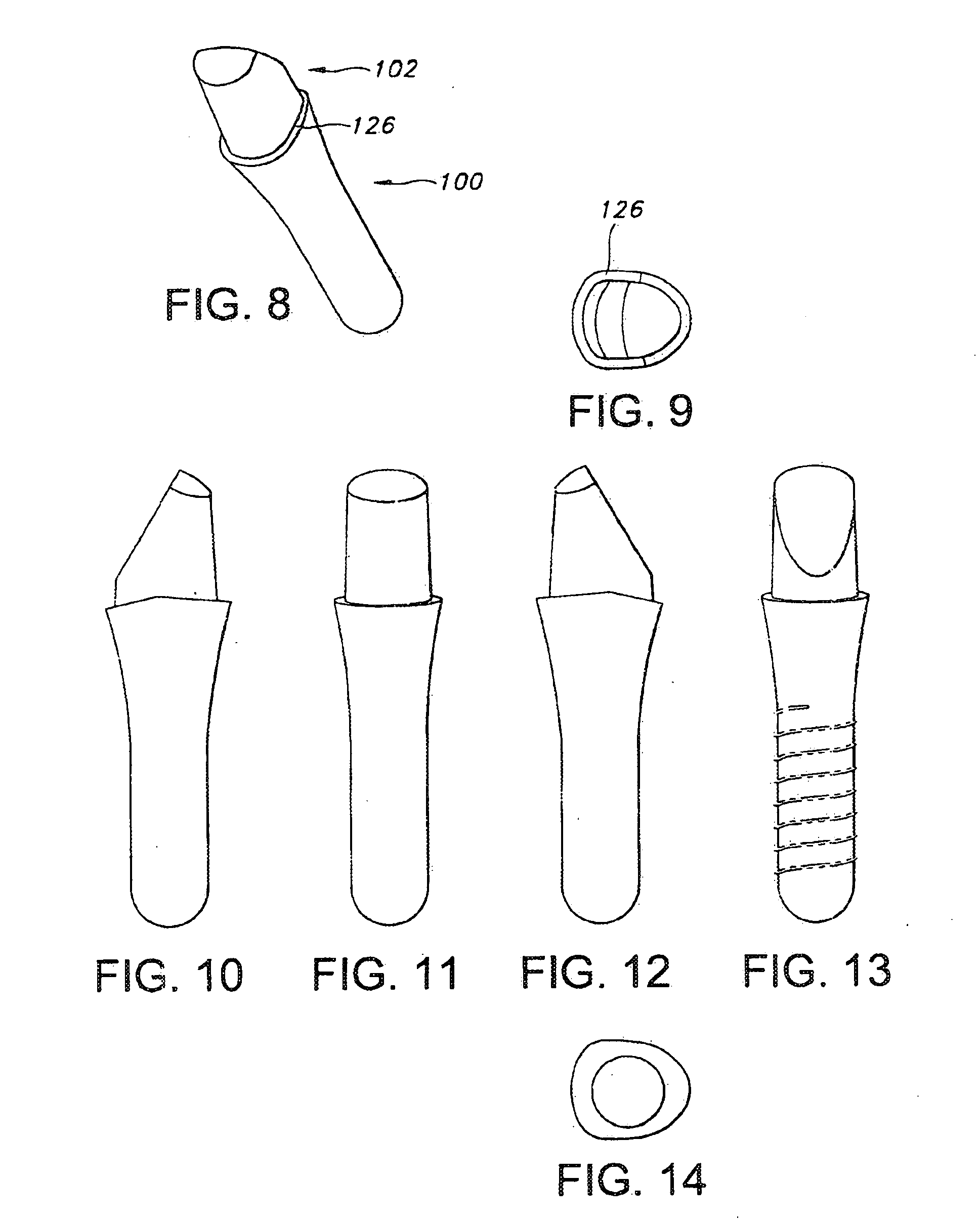Dental implant
a technology of dental implants and implants, applied in the field of dental implants, can solve the problems of loose implants, loss of bone, weakened bond between the fixture and the maxilla or mandible,
- Summary
- Abstract
- Description
- Claims
- Application Information
AI Technical Summary
Problems solved by technology
Method used
Image
Examples
Embodiment Construction
[0049]In the discussion below, the applicants describe a dental implant that is inserted into prepared holes in a mandible or maxilla. To describe several features of the implant, the Applicants use several terms that are here defined or described.
[0050]“Up” used herein with reference to teeth, implants, fixtures, or abutments, refers to the direction generally parallel to the longitudinal axis of the implant or tooth and extending away from the bone in which it is intended to be implanted (i.e. away from the root and toward the crown).
[0051]“Down” is the direction opposite to “up” (i.e. away from the crown and toward the root).
[0052]A “side”, as used with reference to teeth, implants, fixtures, or abutments, refers to the portions of the tooth or implant facing the adjacent teeth or implants when the tooth, implant, fixture, or abutment is embedded in the mandible or maxilla. The side surfaces of teeth or implants directly face the adjacent teeth or implants.
[0053]A “side” can be e...
PUM
 Login to View More
Login to View More Abstract
Description
Claims
Application Information
 Login to View More
Login to View More - R&D
- Intellectual Property
- Life Sciences
- Materials
- Tech Scout
- Unparalleled Data Quality
- Higher Quality Content
- 60% Fewer Hallucinations
Browse by: Latest US Patents, China's latest patents, Technical Efficacy Thesaurus, Application Domain, Technology Topic, Popular Technical Reports.
© 2025 PatSnap. All rights reserved.Legal|Privacy policy|Modern Slavery Act Transparency Statement|Sitemap|About US| Contact US: help@patsnap.com



